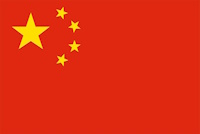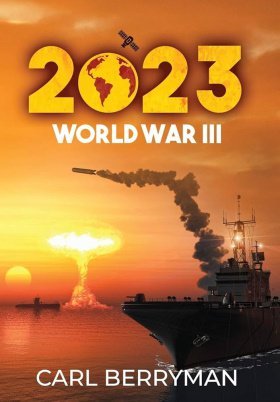
“Mr. President, I have some more good news.”
“What is that, Marge?”
“The Japanese ambassador just informed me that they have launched a new communications satellite over the area. Apparently, they were getting ready to replace one of their older satellites and were close to a launch anyway. They are getting excellent resolution from the television cameras, in the one-meter range from 125 miles up. They are offering to relay their broadcasts to our major networks if we approve of it. We can’t keep the situation quiet forever. I told them absolutely, but I would check with you and get back to them in case you had any objections. Our major network people in their Tokyo offices found out about the offer and aren’t sitting on their hands. They will likely go ahead with or without our governmental approval. I didn’t ask, but I bet the Japanese offered to share with the Europeans as well. They are scared, Mr. President. The ramifications are coming home to them. They can start sharing broadcasts in minutes.”
“Good, Marge. I have no objections. Let’s let the American people see what it is like to be in a war zone again, not just some police action governed by surgical strikes. I think I’ll call Ed McCluskey and see where we are with another of our satellites.”
That night, pictures of nuclear devastation on the Korean peninsula penetrated every American home on the evening news. Retired military personnel appeared on every network as experts in nuclear war. Maps projecting fallout patterns were displayed along with rates of fallout, estimated times of fallout in zones. Maps showing the centers of detonations with Zones I, II, and III depicted. Meteorological data was brought into the equation to describe how current and near-term wind patterns would disperse it. Most of the blasts occurred in South Korea. Much of the fallout would settle in North Korea. Predictions showed that China would receive only modest amounts of fallout, as the blasts were small, almost all less than three kilotons. Only Pyongyang received a sizeable bomb in the north. Chinese armed forces actively engaged and repelled all North Koreans who attempted to cross into China. The border was sealed. The Japanese satellite revealed the armed conflict. The American public became very subdued.
“Everybody saw the results of the nuclear exchange in Korea on TV last night. You all know those signals were relayed from a Japanese satellite. I don’t like being upstaged by the Japanese, but Marge informs us that the Japanese had one almost ready for launch as a replacement. Where do we stand, getting more satellites up, either as commercial or military?”
“I talked with representatives of several of the commercial satellite companies about that two days ago, Mr. President. I meant to bring it up yesterday but got bogged down and failed to mention it. COMSAT says they have put one together from strictly off-the-shelf parts that will do the job. Perhaps it is not quite as good as a specifically tailored one, but one good enough. They say they will have it ready in about a week. They will initiate testing it tomorrow. They were going to have the Chinese or Japanese launch it, but I nixed that. I checked with NASA; they can put it up using the SpaceX Dragon rocket. They are working on the rockets and will have them ready by the end of this week. The Navy recovered the various stages of our previous launch, and NASA is overhauling them for future launches as well. As usual, however, NASA said they are working over budget and need more funds. They want to get back to the space station. If they can get it up to snuff and put a crew in there, they can handle our low orbit stuff a lot easier and cheaper. An attack on it would be a declaration of war with the U.S., and everybody knows it. So, they feel comfortable in trying to sell this approach. NASA says they have some volunteer astronauts willing to man it.”
“Thanks, Ed. God Bless American heroes! We’ll go with the cost be damned. Ed, get it rolling. General Craig, you and Ed work well together; the two of you work it out between your organizations ASAP. I don’t like depending on foreign broadcasts that can be used as filters for information being fed to the American public, let alone the egg on our face of having to depend on foreign resources. Let’s try and get the American military and the civilian community to work together once again for the common good.”
“Mr. President, are you talking about the satellite launch or the space station or both?”
“Both, of course. Let it be known that we will obliterate any nation on earth that attacks the space station. From now on, it is not an International Space Station, it is exclusively an American Space Station. Make sure that the Chinese understand that. They are about the only ones that can challenge it, but don’t specifically mention them by name. We don’t want any miscommunications on this issue at all. Any rockets come anywhere close to it, any nuclear blasts in its vicinity, accidental or otherwise, will result in enough American nuclear firepower being launched to destroy a continent. You can quote me on that to the journalists.”
Robert Lee’s pulse raced at those words. He needed a vacation. Perhaps a week off to fish in Labrador would do it.

“Secretary of Defense Neville, you’re a physicist, what do you and your science boys say about fallout from the Korean nuclear exchange?”
“Mr. President, Korea doesn’t experience the monsoon winds that Southeast Asia does. Nevertheless, the prevailing winds will carry a lot of fallout over the Pacific. Japan, in particular, will receive a lot of it. Summer rains will bring down a lot of the particulate matter, to which alpha particles are attached. Alpha particles are really doubly charged helium atoms. This is a helium atom with both of its electrons removed. They tend to stick to dust particles; hence they are truly the fallout particles; when the dust settles, these charged particles come to earth’s surface. That’s the real threat at this time. The beta and gamma radiation are a done deed. They are much more powerful and are instantaneous at the time of the burst. Beta rays are simply electrons. For the gamma radiation, we’re essentially talking X-rays, Mr. President. Gamma rays are an electromagnetic wave that is the same to a little higher frequency than X-rays.
“All three are ionizing agents, but they differ in their ionizing ability. They ionize other atoms when they collide with them, by knocking their electrons out of place, that is, their orbits. All other factors being equal, they vary considerably in their ionizing power. It is all relative. The gamma ray will ionize one atom to a beta particle’s one hundred atoms to an alpha particle’s ten thousand atoms. That alpha particle gains and loses electrons at a tremendous rate as it passes through material. Ultimately, it will gain and retain two electrons and become a normal helium atom again. The threat it poses is then over.
“Hopefully, a lot of the alpha radiation will come down over the Pacific during rainstorms before it reaches the United States. Still, some of it is bound to reach North America. We just can’t predict how much at this point in time. In order to get a better handle on it, we need the Navy to monitor what’s going on out in the Pacific. We can send some ships out of Pearl Harbor with the specific mission of doing just that. We can also put some aircraft flying around to monitor various levels of the atmosphere and stratosphere to determine the height and concentration of radiation in time and place. That will give us good prediction data. We do have some data from our tests in the South Pacific, but it is very limited. We didn’t have the sophistication at the time of those tests to monitor it the way we do now. The Navy has been drilling for NBC warfare for thirty years, so I don’t see why they can’t do this.
“The Japanese are paying very close attention to this. They have issued public advisories to stay indoors as much as possible. It is particularly important to stay out of the rain. The rain will wash those contaminated dust particles out of the air. Ultimately, those will wash into the seas around Japan. That might be a long-term problem for Japan in terms of radioactive sea foods. The southern Japanese islands will suffer more than the more northerly ones. They can expect to see a rise in cancers over the next few years. I doubt though it will be nearly as bad as what they experienced after World War II. If you study the data, the rates did significantly increase after Hiroshima and Nagasaki, but the total number of cases weren’t near as bad as anticipated, even thirty years later.”
“General Craig, get with Admiral Stark and make that happen. I want very close monitoring of fallout. California is going gaga as we speak. Some of those folks are partying like they won’t live tomorrow, others are fleeing the west coast, some are headed for the hills to try and ride it out. We need good information to predict just what and where and how much.
“Secretary of Health and Human Services Allison, have Surgeon General Carolyn Weber prepare whatever public information you deem necessary to inform the public of the risks, what they can do to prevent undue exposure, personal protection, and so on. I don’t want any panics like Three Mile Island back in the 1970s. The public didn’t comprehend a dang thing then. Let’s hope we can do a better job of informing them than we did then. Utilize every available media. Help the press get it right for a change.”

Chapter 22
The trucks pulled out of Fort Bliss at 08:00. They were well equipped with spare food, water, ammunition, explosives, fuel, medical supplies, the Military Police Company and military journalists armed with camcorders. At the last minute, Colonel Paterson added an engineering company with two bulldozers and a road grader to the column, just in case. The engineering platoon would handle any demolitions, the Emergency Ordnance Disposal any booby traps, assist in collection of weapons, and provide a mass grave for the Mexicans who died in combat. They camped that night out in the desert off of state highway 2810 after a two-hundred-and-fifty-mile drive. That night, the convoy personnel who were not previously briefed were informed that this was not just a routine training exercise, but that they were in support of a “hot” military mission. The battalion commander established at the camp what was, in effect, a FARP, a Forward Arming and Refueling Point. It would serve to provide fuel for the helicopter medical evacuation company to evacuate any wounded soldiers by air to any one of several civilian hospitals or the medical center at Fort Bliss. The helicopters would arrive at 06:00 for refueling. The civilian hospitals would not be informed of any anticipated wounded until the time the parachute drop began. The Division Surgeon of the 82nd had conducted a surreptitious evaluation of the surgical capabilities of the regional hospitals which might be able to offer critical surgery, rather than evacuating wounded all the way back to Fort Bliss, outside of El Paso. The battalion surgeons would triage the wounded.
Boots and saddles sounded at 04:00. Camp was broken by 05:30, and the convoy began to slowly move across the desert. At 06:30, the flight of C-130H Hercules appeared over the horizon from the farm of Jesus Gonzalez. At 06:35, paratroopers from both battalions hit the silk in a perfect circle surrounding the farm. The drop was timed for when it was presumed that the great majority of the workers would be in the mess hall. They were. Many rushed to the door to see why aircraft were flying so low. At that same moment, paratroopers came tumbling out of the aircraft. They were on the ground in seconds. They rolled their chutes, pulled their rifles out of their cases, formed into their platoons and began advancing in an ever-tightening circle. Captain Sabata’s Ranger Company was on the southern end of the camp.
The sniper platoon set up operations as fifteen two-man teams on small rises where they had relatively good views of the operation. They had free fire orders. Anybody who got through the cordon of paratroopers was fair game.
Most of the Mexicans decided either to attempt to escape or to surrender, but a few decided to fight. They dashed to the arms room to grab their rifles, but the double padlocked door delayed them for several minutes while someone went to Jesus Gonzalez’s office to get the keys. The locks and hasps were reinforced to prevent their being pried off. By the time they acquired their rifles and bandoleer of ammunition, the Americans were within two hundred meters and closing fast at a dog trot. So far, not a single shot had been fired. Those Mexicans who decided to fight found the closest cover and opened fire. A dozen paratroopers were immediately hit. The remainder dove to the ground and returned fire. Under orders to fire individual rounds in the semi-automatic mode from their M-4 carbines and M-16A3 rifles rather than full automatic fire, the paratroopers delivered a more accurate, aimed fire. With advanced combat optical sights on their M-16s and M-4s, the Americans quickly inflicted severe casualties on the fighting Mexicans. Most of the Mexicans who were shooting were spraying rounds in the general direction of the soldiers, rather than aimed fire. Most of them were killed or wounded before they recognized the accuracy of fire from the Americans. A few Mexicans threw hand grenades at the soldiers that inflicted several deaths and serious casualties among the soldiers. By coincidence, none of those who threw grenades survived the ensuing return rifle fire.
Using fire and maneuver, each company commander closed the circle towards the central part of the compound. Moving from building to building and securing each in turn, as practiced at Fort Bragg, they quickly secured the compound. Most of the Mexicans had fled the mess hall but quickly ran into the wall of Americans. Most surrendered on the spot, those who were armed dropping their rifles and raising their hands. Others attempted to run through the American lines. Those who did were shot as soon as they passed through the lines to the point where friendly fire would not inflict any casualties. Those few who did manage to pass through the American line and evade rifle fire from the paratroopers were shot by the sniper teams. A few Mexicans armed with sniper rifles engaged the Americans from various positions. They proved to be the most difficult to overcome. They inflicted a dozen casualties before they were eliminated. One Ranger sniper observed his Mexican counterpart firing from an obstructed position and shot him in the head from one thousand meters out with his Remington .308 Winchester sniper rifle.
“Well, there’s a runner, Sarge. Kinda scruffy looking at that. He’s about 700 meters out. He’s running maybe twenty-five or fifty meters, and then falling down playing dead until he thinks the coast is clear. He’s at our 2:00 o’clock. Think you can take him?”
“Specialist Stone, if I couldn’t take him, I wouldn’t be here. I don’t pick him up with the naked eye or in the rifle scope, so he must be down right now.”
“Right you are, Sarge, he’s just behind a little ground swell there. If you let him get to the irrigation ditch, he might just get away. Oops, his head just came up. See him?”
“I got him, Corporal; I figure you’re right at about 700 meters. I’ll get him as he gets to his feet.”
“If you miss, it’s my turn. I want to see if I can pick him off on the run.”
“Keep your cool, Corporal. I still have ten minutes left on the gun before I take over on the spotting scope. Anyhow, I won’t miss. Another second, there he goes.”
As the Mexican rose to a crouch and looked around in preparation to run, the 173-grain bullet launched at 2550 feet per second smashed into the center of his chest. He crumpled to the ground.
“You got him, Sarge! Switch with me now, so maybe I can have a shot!”
Sergeant E-5 Thomas Worth looked at his junior partner with a wide grin. “Sure, why not.” He crawled behind Corporal Stone, who merely rolled over to assume the prone position behind the Harris bipod rested rifle while Sergeant Worth took up surveying through the spotting scope.
“Corporal, there’s some guy prone behind some boxes next to the warehouse. He’s using a scoped rifle and seems to know what he is doing. He is firing slowly and methodically, picking his targets. I don’t like that. Can you pick him up in the scope? He’s on his elbows with a rifle with a bipod. He’s only partially exposed.”
“Yea, Sarge, I saw him raise up and fire and then duck. All I got now are his legs.”
“Well, I’ll see what I can do to shake him loose with my M-14. If we can get him to move, you might get a clear shot when he stands. Be ready.”
“Sarge, I’m ready. Go ahead and do him. Let’s see if you can get a hit at this range with that scoped M-14.”

























